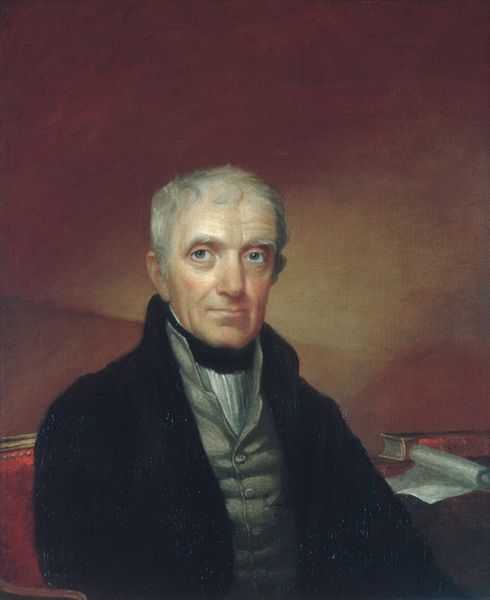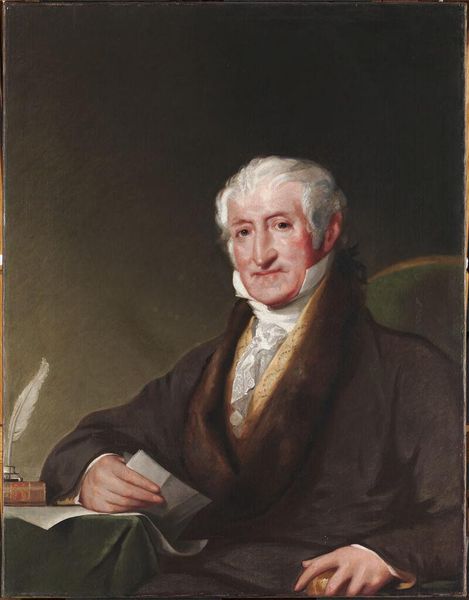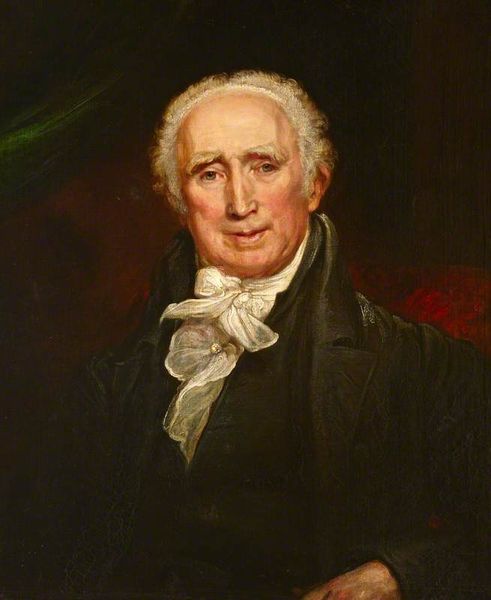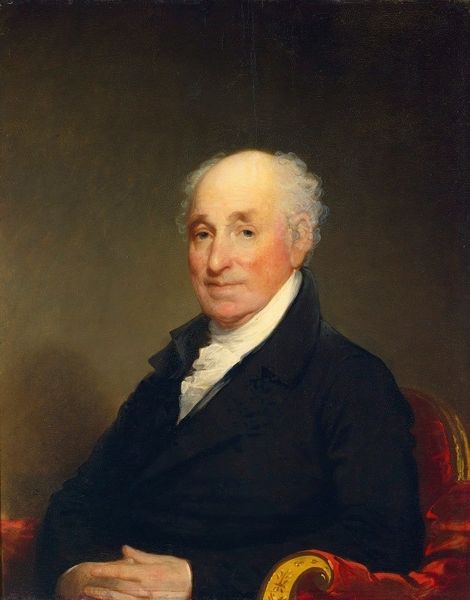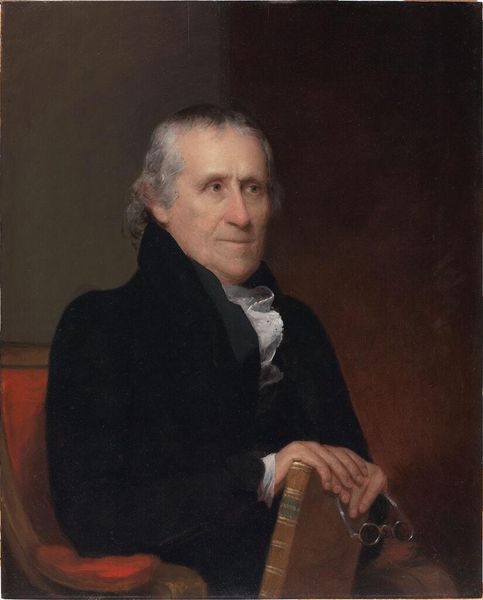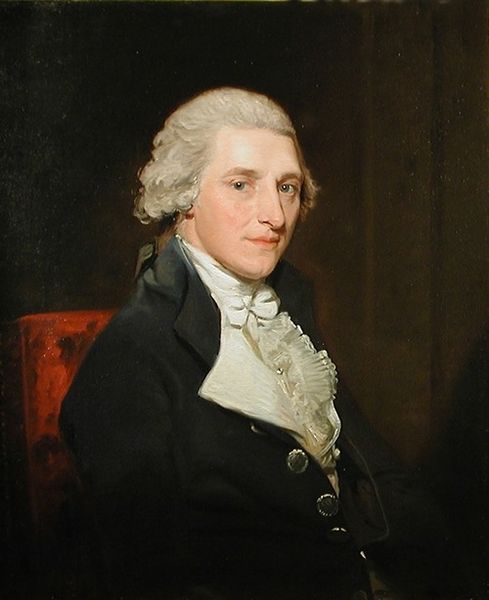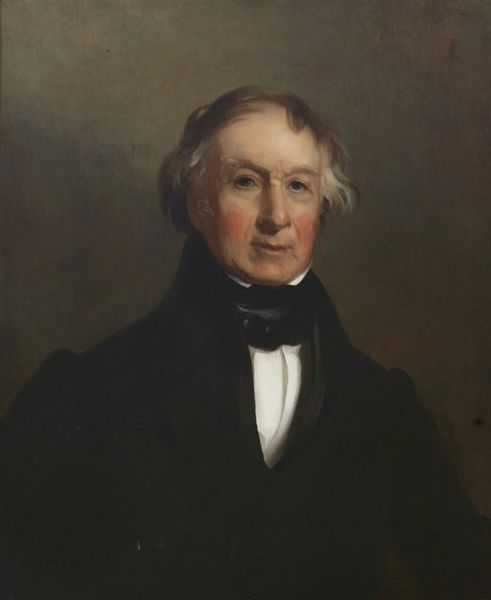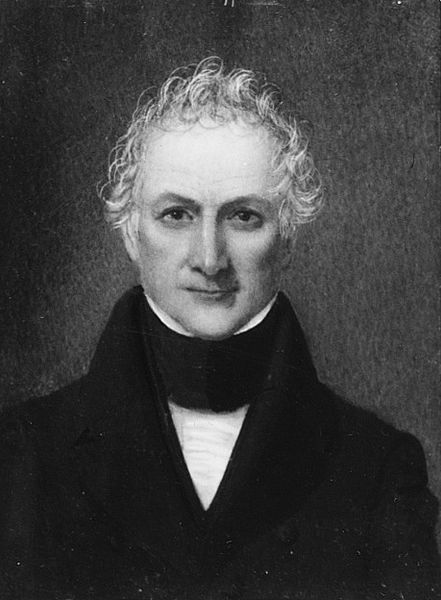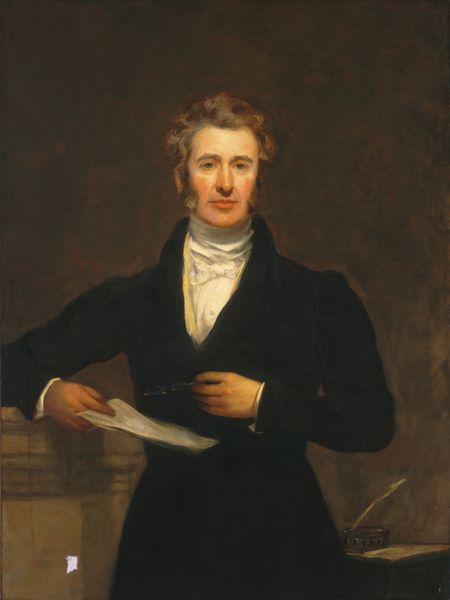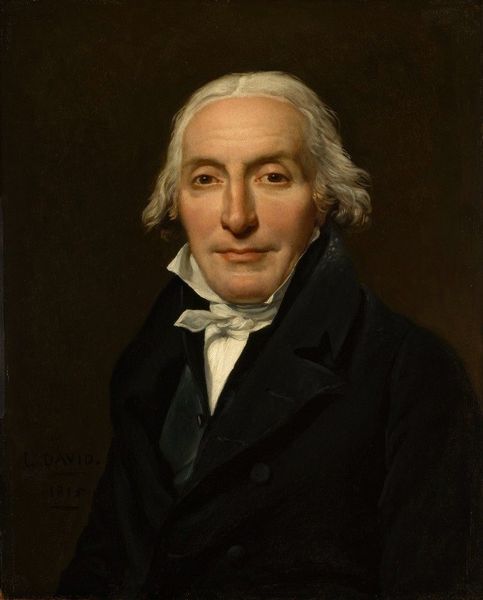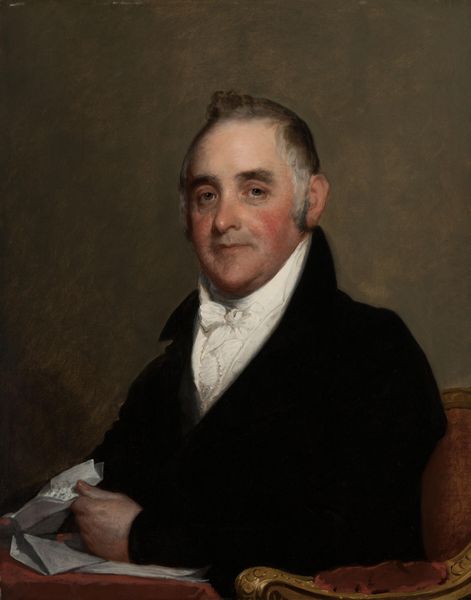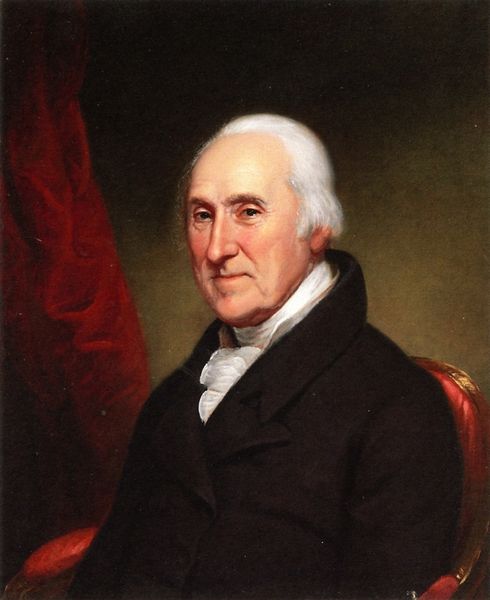
Rodolphe le Chevalier (1777-1865), Amsterdam Merchant and one of three Founders of the Holland Railroad Company 1850
0:00
0:00
janadamkruseman
Rijksmuseum
painting, oil-paint
#
portrait
#
portrait
#
painting
#
oil-paint
#
romanticism
#
realism
Dimensions: height 104 cm, width 84 cm, depth 9.5 cm
Copyright: Rijks Museum: Open Domain
Curator: Let’s discuss this impressive portrait currently hanging here at the Rijksmuseum. It’s a work by Jan Adam Kruseman, dating back to 1850. It depicts Rodolphe le Chevalier, an Amsterdam merchant and one of the founders of the Holland Railroad Company. Editor: He seems like a man of serious composure. There's a weight in his expression, but his grip on the document in his hands looks soft. The palette is dominated by this intense dark jacket offset against that very light complexion, a nice touch from the painter. Curator: Indeed. Kruseman was a highly sought-after portraitist among the Dutch elite. Notice how the backdrop hints at both his affluence, signified by the drapery, and perhaps also an openness, reflected in the outdoor scene visible through the window. He appears as a public figure, a man engaged with the world. Editor: And what's fascinating is the contrast between that traditional composition and what the painting signifies—the emerging power of industry. Railroads were reshaping not just the landscape, but the very fabric of Dutch society at the time, altering how people worked, traded, and traveled. The man portrayed here made it all happen. Curator: Precisely. The choice to depict him with documents and ledgers symbolizes his professional standing and his direct impact on the infrastructural developments of the Netherlands. The portrait essentially communicates that business and finance have become the symbols of success in the Netherlands of the 19th Century. Editor: You know, it's all oil on canvas of course, and Kruseman’s technique creates a tangible sense of surface; there is a very palpable sense of fabrics in the painting; but thinking about his role as founder of the Railroad company, you realize this portrait represents the social ascendance of men with this knowledge about materials and manufacturing—men able to harness physical power and bring a whole country closer together. Curator: He was certainly successful at it, wouldn’t you say? Thank you for sharing those observations. Editor: Of course. These considerations always reveal fresh angles when observing art, even works like this portrait which seem so familiar.
Comments
No comments
Be the first to comment and join the conversation on the ultimate creative platform.
